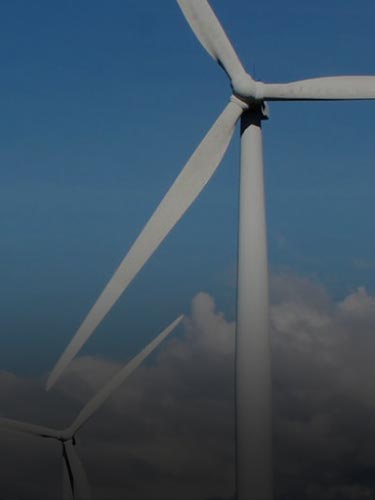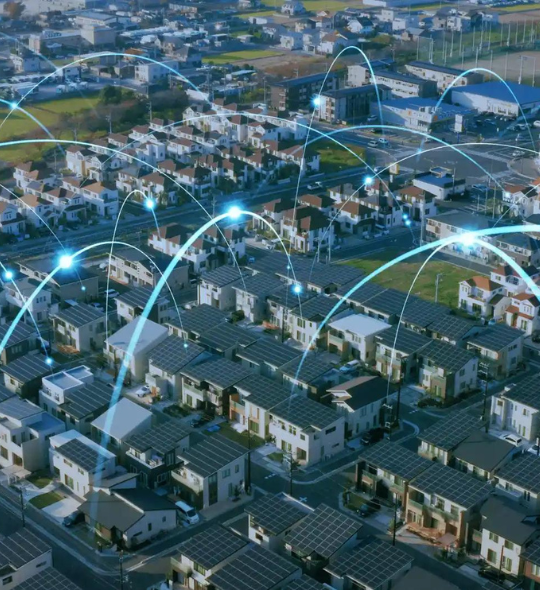
AI demand forecasting helps businesses reduce curtailment and increase their energy savings.
TL;DR
-
Artificial intelligence (AI) demand forecasting accelerates the creation of smarter, more flexible grids.
-
The impact of AI in the renewables sector is forecast to surpass $75 billion by 2030.
-
Using AI to track demand from energy users helps system operators create better forecasts.
Predicting the future with any accuracy has always been daunting, and forecasting energy demand is no different. But for businesses who take the challenge on, the savings results are irresistible.
As the energy sector embraces digital transformation and becomes more decentralized, we face a tsunami of data. From weather to game theory, thousands of variables need to be taken into consideration.
To make meaningful sense of this data, companies are leveraging artificial intelligence (AI) to improve the accuracy of energy demand predictions. AI solutions can wade through the torrent of data and deliver actionable insights that help businesses save energy and money.
The energy sector is one of the fastest growing end-use markets for AI. The AI-renewables market is growing rapidly, with market size reaching $8.2 billion in 2021 and slated to surpass $75 billion by 2030. Of this, AI demand forecasting currently holds the largest market share.
The interplay between AI and renewables is a perfect example of why optimizing not just how we produce energy—but also how we use it—is a major step towards building the green economy.
Using AI to forecast energy demand
The ability to quickly process massive amounts of data makes AI ideal for finding patterns. Specifically, AI models use historical data to create generalizations about future trends. As such, AI has proven to be a successful method for energy demand forecasting.
A study published by Renewable and Sustainable Energy Reviews notes that “it is increasingly apparent that AI can contribute greatly [to] the future successes of DR schemes by automating the process, while learning the preferences of end-use consumers.”
Specifically, short-term load forecasting (STLF) is a key focus area. STLF deals with projections a few hours to a few days ahead. This is useful for ensuring generation stability, dispatch readiness, and curtailment ability.
This is critical given the rapid expansion of smart devices and decentralized assets that make up the modern grid. Using AI is the only way to avoid information overload. Artificial intelligence has immense potential to help us cut emissions and energy bills.
That said, AI forecasting isn’t just something to look forward to in the future. The clean energy sector is already benefiting from AI breakthroughs in other sectors.
“The time has come for improved forecasting services that make the most out of state-of-the-art AI methods. The know-how is there, we just need to deploy it to the field,” explains Sergio Motta, team leader of the Smart Grids research group at VTT Technical Research Centre in Finland.
AI forecasting and grid management
AI is already being used to predict usage around the world, a trend which will only accelerate in the coming years. North America is the fastest-growing market, with projections showing AI will help the region reduce greenhouse gasses by 6 percent by 2030.
Demand forecasting can be implemented at all stages of the energy network. For example when it comes to generation, AI can be used to improve the accuracy of weather models which in turn increases renewables efficiency.
IBM has partnered with the U.S. Department of Energy (DoE) to create self-learning weather models that improve solar forecasts by 30 percent. This collaboration is part of a wider DoE effort to leverage AI, including announcing $37 million for AI research in August 2020.
“We’ve found that improved solar forecasts decreased operational electricity generation costs, decreased start and shutdown costs of conventional generators, and reduced solar power curtailment,” explains Hendrink Hamann, Chief Scientist for geoinformatics at IBM.
In turn, a better sense of energy supply helps fine-tune demand response, especially when coupled with AI insights from other actors, including system operators and end-users.
For example, Indian utility TATA Power uses AI, while the Transmission Company of Andhra Pradesh (APTransco) launched India’s first day-ahead electricity forecast in December 2020.
Developed in tandem with Google and the World Bank, the AI solution enables precise forecasts in 15-minute intervals.
At the other end of the spectrum, AI-driven forecasting helps energy users curtail more efficiently, save money, and support grid stability.
For instance, AI can leverage smart-meter data to create day-ahead forecasts for individual buildings and facilities based on historical data. Feeding these forecasts back to system operators makes curtailment more targeted and effective.
Energy efficiency companies that facilitate energy savings and the adoption of clean technology are tying these assets together. Many of these companies use AI to drive their entire business model.
For example, U.S. energy storage firm Stem uses AI-enabled demand forecasts to store energy during off-peak times and sell power when it’s more profitable. AI helps Stem optimize its operations while also providing its customers year-over-year savings of 5 percent.
EnPowered’s AI-powered forecasts help customers save energy
Emerging clean energy businesses are taking advantage of AI-driven solutions to accelerate the green transition. And combining intelligent forecasts with responsive energy efficiency assets ensures energy users get the most out of their solutions.
Usage forecasting that leverages the power of AI is an important step in creating a digital, 21st century grid. At EnPowered, we use AI-enabled demand forecasts to unlock new savings opportunities for large energy consumers.
EnPowered Programs allows these businesses to optimize their curtailment efforts, and avoid costly peak pricing.
Ready to learn more? Reach out today to discover how EnPowered leverages AI to help companies maximize savings and minimize downtime.





